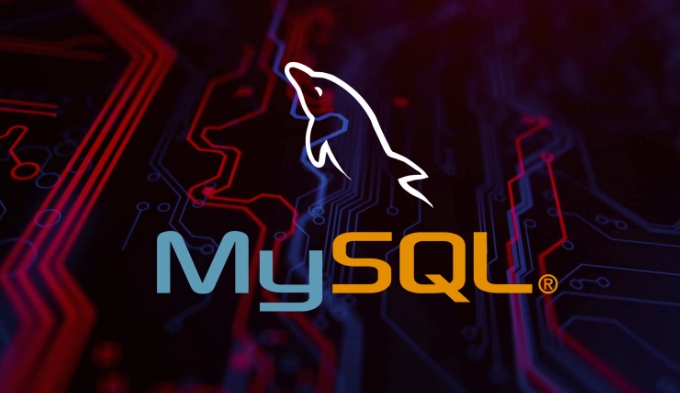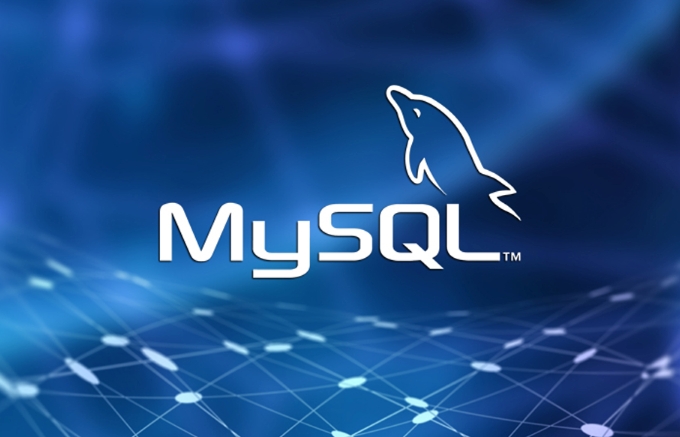Planning and Executing a MySQL Database Upgrade
Jul 06, 2025 am 02:17 AMThe key to upgrading MySQL database is to clarify the purpose, do backup tests, perform key checks and upgrade step by step. 1. Clarify the purpose of the upgrade (such as performance and security) and select the appropriate version (such as 5.7 to 8.0), and check the compatibility instructions; 2. Make a full backup and simulate the upgrade in the test environment to ensure application compatibility; 3. Check the hardware, database objects, logs and installation method configurations; 4. Perform the upgrade in stages, stop the application first, run the script according to the document and restart the service, and then restore the traffic after confirming that it is correct.

Upgrading a MySQL database sounds a bit complicated, but in fact, as long as you plan properly and execute carefully, it can be completed smoothly in most cases. The key is to prepare in advance, understand the risk points, and follow the steps.

1. Clarify the purpose of the upgrade and version selection
Before you start, ask yourself: Why do you need to upgrade? Is it to obtain new features, improve performance, or fix security vulnerabilities? MySQL version is updated frequently, and there may be large differences between different branches (such as 5.7 to 8.0), especially system table structure, default configuration, and syntax changes.

- If you are currently using 5.7, upgrading to 8.0 is a common requirement.
- Pay attention to check the official compatibility instructions, especially reminders about abandoned functions.
- Don’t blindly pursue new things, choose a stable version that has been verified and well-supported by the community.
2. Prepare for backup and test environment
This is the easiest to be overlooked but also the most critical link. Once an error occurs during the upgrade process, the ability to restore data depends on whether you have a complete backup.
- Use
mysqldumpor physical backup tools such as Percona XtraBackup for full backup. - In a non-production environment, first simulate the entire upgrade process and observe whether there are any errors or behavior changes.
- Test whether the application is properly connected to the new version of the database, especially the ORM framework or stored procedures.
Some companies will build a test environment that is almost consistent with the production environment and are specifically used for drills and upgrades. Although it takes a little time, it can greatly reduce risks.

3. Perform key checks before upgrading
Upgrade is not done in one click. If the preliminary inspection is not in place, it may lead to failure in the middle or abnormal service after the upgrade.
- Ensure that the server hardware meets new version requirements such as memory, CPU, and disk space.
- Check whether there are incompatible objects in the current database, such as using removed syntax or functions.
- Check log files and error information to eliminate potential problems that affect the escalation process.
If you are using a package manager installation (such as apt or yum), it is recommended to update the source configuration first; if it is a source code compilation and installation, pay attention to the path and permission settings.
4. Perform upgrades in step by step and monitor status
When actually performing an upgrade, it is recommended to advance in stages rather than replace them all at once.
- Stop application access first to ensure that the database is in a controllable state.
- Step-by-step execution of upgrade scripts according to the official documentation, such as running
mysql_upgrade. - After the upgrade is completed, restart the service and check whether all plug-ins and functions are loading normally.
Do not send traffic in immediately after upgrading. You can manually connect to the database and execute some common queries. After confirming that there is no problem, you can gradually restore the service.
Basically that's it. MySQL upgrade seems to have many steps, but in fact, each step is not difficult. The key is that you cannot skip any details. Make good plans and leave enough time to test, so that many problems can be discovered in advance.
The above is the detailed content of Planning and Executing a MySQL Database Upgrade. For more information, please follow other related articles on the PHP Chinese website!

Hot AI Tools

Undress AI Tool
Undress images for free

Undresser.AI Undress
AI-powered app for creating realistic nude photos

AI Clothes Remover
Online AI tool for removing clothes from photos.

Clothoff.io
AI clothes remover

Video Face Swap
Swap faces in any video effortlessly with our completely free AI face swap tool!

Hot Article

Hot Tools

Notepad++7.3.1
Easy-to-use and free code editor

SublimeText3 Chinese version
Chinese version, very easy to use

Zend Studio 13.0.1
Powerful PHP integrated development environment

Dreamweaver CS6
Visual web development tools

SublimeText3 Mac version
God-level code editing software (SublimeText3)

Hot Topics
 What is GTID (Global Transaction Identifier) and what are its advantages?
Jun 19, 2025 am 01:03 AM
What is GTID (Global Transaction Identifier) and what are its advantages?
Jun 19, 2025 am 01:03 AM
GTID (Global Transaction Identifier) ??solves the complexity of replication and failover in MySQL databases by assigning a unique identity to each transaction. 1. It simplifies replication management, automatically handles log files and locations, allowing slave servers to request transactions based on the last executed GTID. 2. Ensure consistency across servers, ensure that each transaction is applied only once on each server, and avoid data inconsistency. 3. Improve troubleshooting efficiency. GTID includes server UUID and serial number, which is convenient for tracking transaction flow and accurately locate problems. These three core advantages make MySQL replication more robust and easy to manage, significantly improving system reliability and data integrity.
 What is a typical process for MySQL master failover?
Jun 19, 2025 am 01:06 AM
What is a typical process for MySQL master failover?
Jun 19, 2025 am 01:06 AM
MySQL main library failover mainly includes four steps. 1. Fault detection: Regularly check the main library process, connection status and simple query to determine whether it is downtime, set up a retry mechanism to avoid misjudgment, and can use tools such as MHA, Orchestrator or Keepalived to assist in detection; 2. Select the new main library: select the most suitable slave library to replace it according to the data synchronization progress (Seconds_Behind_Master), binlog data integrity, network delay and load conditions, and perform data compensation or manual intervention if necessary; 3. Switch topology: Point other slave libraries to the new master library, execute RESETMASTER or enable GTID, update the VIP, DNS or proxy configuration to
 How to connect to a MySQL database using the command line?
Jun 19, 2025 am 01:05 AM
How to connect to a MySQL database using the command line?
Jun 19, 2025 am 01:05 AM
The steps to connect to the MySQL database are as follows: 1. Use the basic command format mysql-u username-p-h host address to connect, enter the username and password to log in; 2. If you need to directly enter the specified database, you can add the database name after the command, such as mysql-uroot-pmyproject; 3. If the port is not the default 3306, you need to add the -P parameter to specify the port number, such as mysql-uroot-p-h192.168.1.100-P3307; In addition, if you encounter a password error, you can re-enter it. If the connection fails, check the network, firewall or permission settings. If the client is missing, you can install mysql-client on Linux through the package manager. Master these commands
 Why is InnoDB the recommended storage engine now?
Jun 17, 2025 am 09:18 AM
Why is InnoDB the recommended storage engine now?
Jun 17, 2025 am 09:18 AM
InnoDB is MySQL's default storage engine because it outperforms other engines such as MyISAM in terms of reliability, concurrency performance and crash recovery. 1. It supports transaction processing, follows ACID principles, ensures data integrity, and is suitable for key data scenarios such as financial records or user accounts; 2. It adopts row-level locks instead of table-level locks to improve performance and throughput in high concurrent write environments; 3. It has a crash recovery mechanism and automatic repair function, and supports foreign key constraints to ensure data consistency and reference integrity, and prevent isolated records and data inconsistencies.
 Why do indexes improve MySQL query speed?
Jun 19, 2025 am 01:05 AM
Why do indexes improve MySQL query speed?
Jun 19, 2025 am 01:05 AM
IndexesinMySQLimprovequeryspeedbyenablingfasterdataretrieval.1.Theyreducedatascanned,allowingMySQLtoquicklylocaterelevantrowsinWHEREorORDERBYclauses,especiallyimportantforlargeorfrequentlyqueriedtables.2.Theyspeedupjoinsandsorting,makingJOINoperation
 What are the transaction isolation levels in MySQL, and which is the default?
Jun 23, 2025 pm 03:05 PM
What are the transaction isolation levels in MySQL, and which is the default?
Jun 23, 2025 pm 03:05 PM
MySQL's default transaction isolation level is RepeatableRead, which prevents dirty reads and non-repeatable reads through MVCC and gap locks, and avoids phantom reading in most cases; other major levels include read uncommitted (ReadUncommitted), allowing dirty reads but the fastest performance, 1. Read Committed (ReadCommitted) ensures that the submitted data is read but may encounter non-repeatable reads and phantom readings, 2. RepeatableRead default level ensures that multiple reads within the transaction are consistent, 3. Serialization (Serializable) the highest level, prevents other transactions from modifying data through locks, ensuring data integrity but sacrificing performance;
 How to add the MySQL bin directory to the system PATH
Jul 01, 2025 am 01:39 AM
How to add the MySQL bin directory to the system PATH
Jul 01, 2025 am 01:39 AM
To add MySQL's bin directory to the system PATH, it needs to be configured according to the different operating systems. 1. Windows system: Find the bin folder in the MySQL installation directory (the default path is usually C:\ProgramFiles\MySQL\MySQLServerX.X\bin), right-click "This Computer" → "Properties" → "Advanced System Settings" → "Environment Variables", select Path in "System Variables" and edit it, add the MySQLbin path, save it and restart the command prompt and enter mysql--version verification; 2.macOS and Linux systems: Bash users edit ~/.bashrc or ~/.bash_
 What are the ACID properties of a MySQL transaction?
Jun 20, 2025 am 01:06 AM
What are the ACID properties of a MySQL transaction?
Jun 20, 2025 am 01:06 AM
MySQL transactions follow ACID characteristics to ensure the reliability and consistency of database transactions. First, atomicity ensures that transactions are executed as an indivisible whole, either all succeed or all fail to roll back. For example, withdrawals and deposits must be completed or not occur at the same time in the transfer operation; second, consistency ensures that transactions transition the database from one valid state to another, and maintains the correct data logic through mechanisms such as constraints and triggers; third, isolation controls the visibility of multiple transactions when concurrent execution, prevents dirty reading, non-repeatable reading and fantasy reading. MySQL supports ReadUncommitted and ReadCommi.






